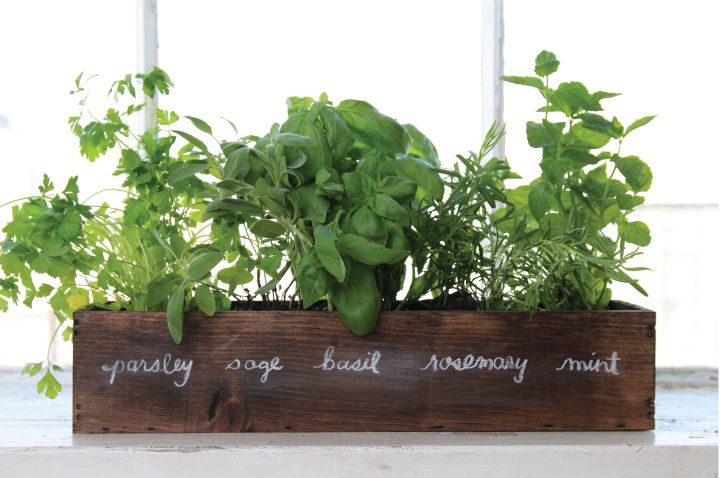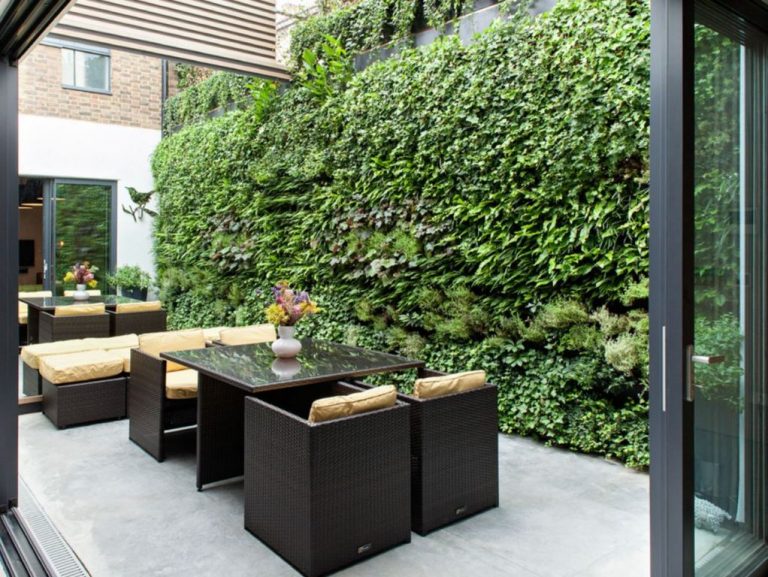Windowsill Gardening: Bringing Nature Indoors In Urban Homes
Introduction to Windowsill Gardening
Windowsill gardening has surged in popularity in recent years, especially in urban areas. This unique form of gardening allows city dwellers and apartment residents to experience the joys of growing plants without access to a yard or outdoor space. By cultivating a miniature garden right on the windowsill, urban homedwellers can bring a touch of nature indoors and enjoy fresh herbs, flowers, and more.
The benefits of windowsill gardening are numerous. Studies show that being around plants can reduce stress, improve focus, and boost moods. Windowsill gardens allow urban residents to easily access these mental health perks daily. Caring for a windowsill garden also provides a sense of accomplishment and can be a fun hobby, especially for children. Additionally, windowsill herb and vegetable gardens can provide ultra-fresh seasoning and produce right in the kitchen.
With just a bit of light, some simple supplies, and regular care, windowsill gardening can transform any urban home into a personal indoor oasis. This comprehensive guide will provide tips and tricks for successfully bringing the joys of gardening into city apartments and dwellings.
Types of Plants to Grow
There are many types of plants that thrive on windowsills and bring joy indoors. Here are some top options:

Herbs like basil, oregano, rosemary, thyme, parsley, chives, and mint grow well in pots on windowsills and provide fresh flavor for cooking. Make sure the container is large enough to accommodate the herb’s root system. Keep the soil moist but not soggy [1].
Leafy greens like lettuce, kale, spinach, arugula, and chard can also be grown in pots on a sunny windowsill. Harvest leaves regularly to encourage new growth. Greens need at least 5 hours of sunlight per day [2].
Succulents like echeveria, jade plant, aloe vera, and haworthia are low maintenance and thrive with the right light conditions. Choose succulents that enjoy the light levels by your window. Allow soil to dry between waterings [3].
Vining plants like pothos, philodendrons, and spider plants trail beautifully along windowsills. Provide a trellis or hanging pot for them to climb. Keep soil consistently moist but not wet [1].
Flowering plants like orchids, African violets, begonias, and geraniums add cheerful pops of color by the window. Place in bright, indirect light and water when the top inch of soil is dry [2].
With the right plants and care, your windowsill can flourish with life and greenery.
[1] https://www.gardenersworld.com/how-to/grow-plants/eight-house-plants-to-grow-on-a-windowsill/
[2] https://www.apartmenttherapy.com/best-windowsill-plants-36812314
[3] https://www.kew.org/read-and-watch/windowsill-veg-herbs
Choosing the Right Location
When growing plants on a windowsill, choosing the optimal location is crucial for the plants to thrive. There are a few key factors to consider when selecting the right spot:
Sunlight
Most houseplants need bright, indirect light to photosynthesize and grow properly. Direct hot sunlight can scorch leaves. East or west-facing windows are ideal as they provide gentler morning or afternoon sun. South-facing windows can work if filtered through semi-transparent curtains (PlantMaid). Plants that need less light can be placed further away from the window.
Ventilation
Proper air circulation is vital so plants aren’t susceptible to mold and pests. Avoid spots with HVAC vents blowing directly on them. Near open windows is great for air flow but be mindful of cold drafts in winter (UrbanLeaf).
Space
Consider the fully grown size of plants and allow enough space between them for ample growth. Larger plants may need their own plant stand near the window if windowsill space is limited (MiracleGro).
Preparing the Windowsill
Before starting your windowsill garden, you’ll need to make sure the windowsill is ready for planting by gathering any necessary materials and cleaning the area thoroughly. Choose a south or west-facing windowsill to ensure the plants get enough sunlight.
You’ll need a few basic materials like clean containers or pots, potting soil, and drainage trays. Make sure to have a small watering can and gardening tools like trowels on hand as well. Select containers that are 4-6 inches deep and have drainage holes at the bottom.
Thoroughly clean the windowsill before placing any plants. Wipe down with soap and water, removing any dirt or debris. You may also want to scrub the windowsill and apply a fresh coat of paint if needed. Make sure no ledges or overhangs will prevent the plants from getting adequate sunlight.
Place the pots on a waterproof tray to prevent water damage and line with pebbles or stones for drainage. Pour potting soil into each container, leaving about 1 inch from the top. The windowsill is now ready for plants!
Planting and Caring
Proper soil is crucial for growing healthy plants in a windowsill garden. Use a high-quality potting mix that drains well yet retains moisture. Enrich the soil with compost or worm castings to provide nutrients. Select containers at least 6 inches deep and with drainage holes. Clay or plastic pots both work well. Gently loosen the roots before placing each plant in its container. Water thoroughly after planting.
Check soil moisture regularly, watering whenever the top 1-2 inches become dry. Water until it drains from the bottom to prevent salt buildup. Fertilize monthly with a balanced liquid fertilizer diluted to half strength. Rotate pots occasionally so all sides receive equal light. Prune leggy growth to encourage bushier habits. Mist leaves periodically to increase humidity around the plants.
Source: https://www.thegoodlifewithamyfrench.com/post/beginners-guide-to-windowsill-gardneing
Troubleshooting Common Issues
When growing plants on a windowsill, there are a few common issues that may arise. Three of the most frequent problems are pests, mold growth, and insufficient sunlight.
Pests like aphids, spider mites, and mealybugs can infest indoor plants, sucking sap and damaging growth. Check undersides of leaves and stems regularly for any bugs. Remove them with a strong spray of water or use insecticidal soap. Be sure to isolate any infested plants away from others. See this guide for more tips on indoor pest control.
Excess moisture can lead to mold growth on potting soil or on plant leaves and stems. Allow the soil to dry out between waterings and make sure there is good air circulation around plants. Remove any molded leaves immediately and repot plants if the soil shows mold growth. A small fan blowing nearby air can help.
Insufficient sunlight is a common issue for windowsill gardens. Rotate pots regularly so all sides of the plants get even light. Try moving plants to the brightest window if growth is stunted. Supplement with a grow light for a few hours per day if sunlight from windows isn’t enough. South or west facing windows usually offer the most light.
Creative Display Ideas
Windowsills offer a blank canvas to get creative with displaying your plants. Here are some fun ideas to liven up your space:
Hanging Plants
Suspend plants in hanging pots, macrame holders or wire baskets near the window to utilize vertical space. Trailing plants like ivy, wandering jew and pothos look great cascading down. Opt for lightweight pots to avoid pulling down curtains or blinds. Hang plants using removable adhesive hooks for easy repositioning. For example, hang a wire basket filled with succulents near the top of the window [1].
Shelves
Install shelving above the windowsill to double your planting space. You can use readymade wall-mounted shelves or floating shelves. Place them at staggered heights to create a tiered display. Use railings or tension rods across the window to hold removable shelf brackets. Make sure brackets can support the weight of pots when watered. Display a mix of plant heights and textures on the shelves for visual interest.
Railings
If you have railings or banisters nearby, hang planters from them to free up windowsill space. Opt for lightweight self-watering pots that attach with built-in hooks. Use S-hooks to hang heavier ceramic pots. Position plants at different heights along the railing. Let ivy or philodendrons trail down the side. Place tall snake plants on the floor below. The railing lets you show off more plants in the same window area [2].
Health Benefits
Having plants indoors provides numerous health benefits. Studies have shown that interaction with indoor plants can reduce stress and anxiety levels as well as lower heart rate and blood pressure (Healthline). The natural beauty and living qualities of plants are believed to have significant psychological and physical calming effects.
Additionally, indoor plants improve indoor air quality through a natural process called phytoremediation. Plants absorb carbon dioxide from the air and release oxygen through photosynthesis. Research from NASA has shown that certain indoor plants like peace lilies, Chinese evergreens, and English ivy effectively filter harmful volatile organic compounds like formaldehyde and benzene from the air (Piedmont). This helps purify indoor air and reduce airborne pollutants that can negatively impact health.
Having plants in living and working spaces provides natural air filtration without chemicals or air filters. This helps create a more relaxing and healthy indoor environment.
Involving Children
Growing plants in a windowsill garden can provide many educational benefits for children. It teaches them responsibility by having them participate in caring for the plants. Watering the plants daily or weekly gives kids ownership over keeping the plants alive. Kids also learn about nature, such as how plants grow from seeds, need sunlight and water to thrive, and change over time as they sprout leaves or flowers.
There are many fun, hands-on gardening activities you can do with children. Let them help fill pots with soil, plant the seeds or seedlings, and water the plants. Have them observe the plants each day, drawing pictures or taking photos to track the changes. Kids can get creative and make signs, decorations or mini flowerbeds to go around the pots. When the plants start producing vegetables or herbs, involve kids in harvesting and even using the fresh ingredients in a recipe they can help cook. Gardening provides sensory learning, science lessons, responsibility and pride as children nurture life.
Sources:
https://kidsgardening.org/resource-lesson-plans/
https://www.brighthorizons.com/Resources/Article/gardening-with-children
Conclusion
In conclusion, windowsill gardening can be a fun, rewarding way to bring nature indoors even in urban settings. With some planning and basic care, anyone can cultivate a beautiful miniature garden in their home. The visual interest and calming presence of plants can lift the mood and add life to any space. Besides being aesthetically pleasing, gardening has been shown to provide mental and physical benefits. It is also a great way to teach children about nature, responsibility and patience. With a bit of creativity, windowsills can be transformed into charming displays that reflect the gardener’s unique style and personality. For city dwellers longing for greenery, window gardens are a simple way to infuse urban living with the vibrancy of nature.






